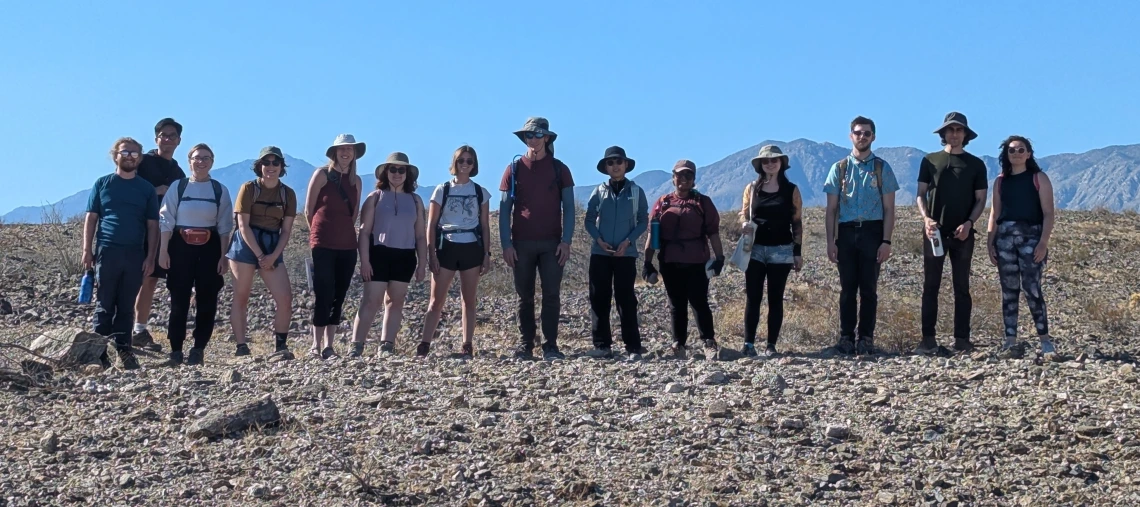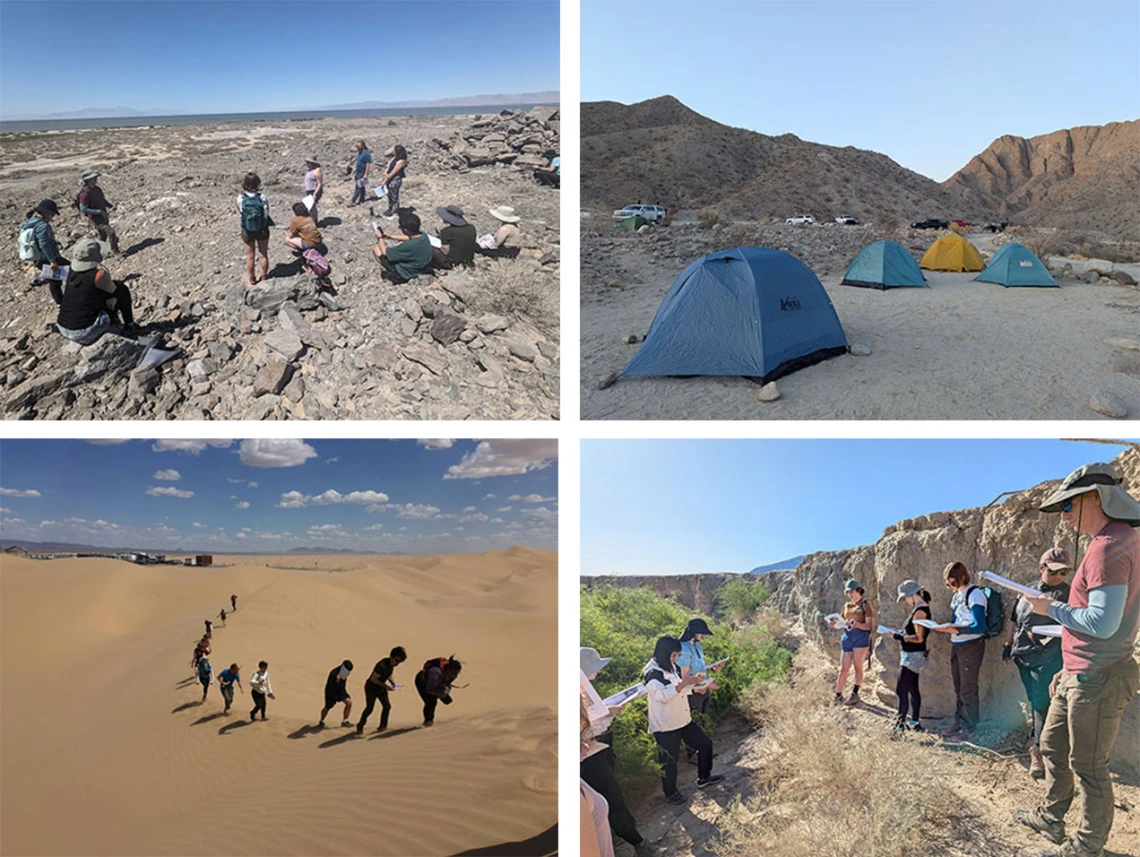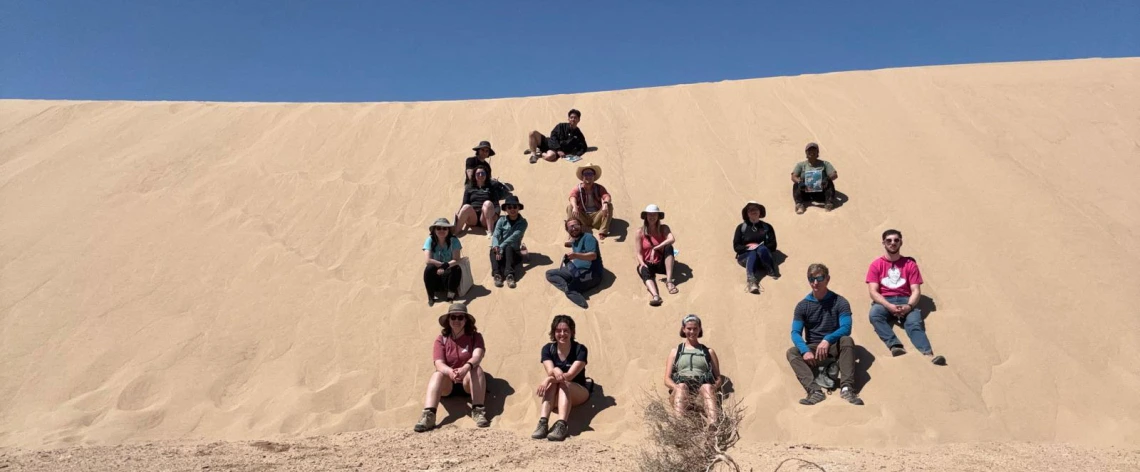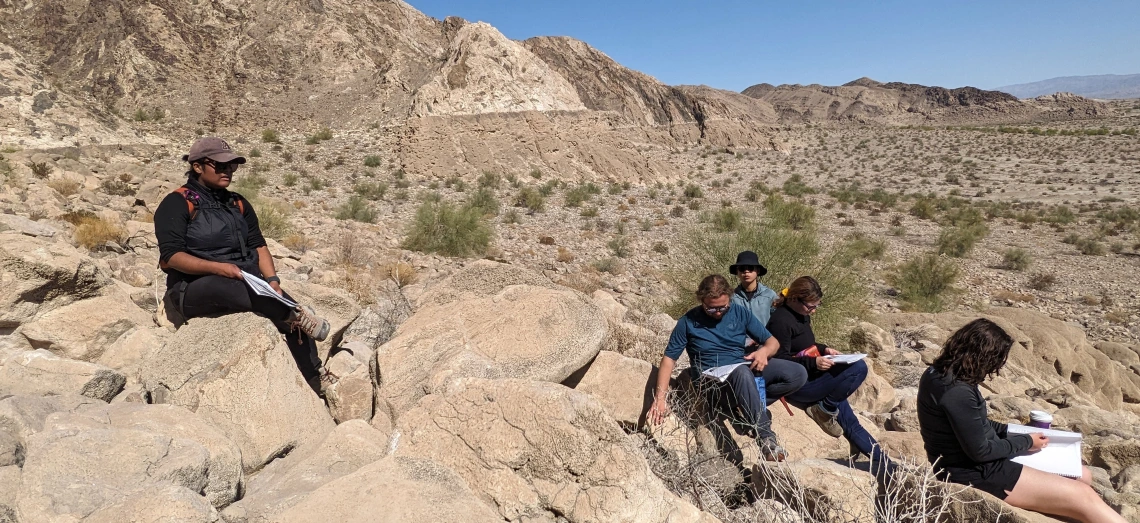Spring 2025 Planetary Geology Field Studies: Salton Sea

By Shane Byrne. Photos courtesy of Robin VanAuken, Joe Schools, and Reed Spurling.
This semester, the LPL field trip traveled to the Salton Sea in southern California. The Salton Sea is just the latest incarnation of large lakes that have existed there since the end of the last ice age and we were able to see all parts of the lake lifecycle.
We have lakes so often in this area due to the low-lying terrain of the Salton Trough. The famous San Andreas Fault splits into many minor branches in this area; kinks in these minor branches can cause pull-apart basins where the topography is low and the crust is thin. We saw plenty of evidence of this faulting in beheaded alluvial fans and steep mountain fronts. The thin crust also leads to copious geothermal activity (there are plenty of power plants there taking advantage of that). We visited recent volcanic domes and active mud volcanoes that indicate the shallowness of hot subsurface material.

Because it’s a closed basin, the most-recent historic lake, Lake Cahuilla, dried up a few centuries ago. Tufa deposits that formed in the quiescent lakeshore environment on the hills surrounding the Salton Trough show the former shoreline and old lake sediment is blowing around in the form of sand dunes that we visited in the Algodones Dunefield among others. It’s still possible to dig up freshwater shells in the desert in this area.
There’s a much smaller (and shrinking) lake within the trough that is now called the Salton Sea. It was created in the early twentieth century when some careless canal construction accidently diverted the Colorado River (undammed at the time) into the Salton Trough. It took over a year to bring the fiasco under control and get the Colorado flowing back into the Gulf of California again. Eventually, the Southern Pacific Railroad stepped in to stem the flood by dedicating a significant fraction of all its rail traffic to dumping rocks into the breach. Although initially a wonderful resort location, the Salton Sea has become saline and extremely polluted from evaporation and agricultural runoff. Melancholy remnants of the Sea’s golden age are scattered around the shore, along with dead fish and an unwholesome smell. Many plans have been floated to keep the lake levels high and avoid exposing the toxic sediments on its bed, but a solution remains elusive.



